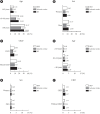Cardiovascular Disease & Diabetes Statistics in Korea: Nationwide Data 2010 to 2019
- PMID: 39610135
- PMCID: PMC11621650
- DOI: 10.4093/dmj.2024.0275
Cardiovascular Disease & Diabetes Statistics in Korea: Nationwide Data 2010 to 2019
Abstract
Backgruound: This study aimed to provide updated insights into the incidence and management of cardiovascular disease (CVD) in Korean adults with diabetes.
Methods: Using data from the Korean National Health Insurance Service and Korea National Health and Nutrition Examination Survey, we analyzed the representative national estimates of CVD in adults with diabetes.
Results: The age- and sex-standardized incidence rate of ischemic heart disease (IHD), ischemic stroke, and peripheral artery disease (PAD) decreased from 2010 to 2019 in individuals with type 2 diabetes mellitus (T2DM). However, an increase in the incidence of heart failure (HF) was observed during the same period. Only 4.96% of adults with diabetes and CVD achieved optimal control of all three risk factors (glycemic levels, blood pressure, and lipid control). Additionally, high-intensity statin treatment rates were 8.84% and 9.15% in individuals with IHD and ischemic stroke, respectively. Treatment with a sodium-glucose cotransporter-2 inhibitor (SGLT2i) or a glucagon-like peptide-1 receptor agonist (GLP-1RA) was relatively low in 2019, with only 11.87%, 7.10%, and 11.05% of individuals with IHD, ischemic stroke, and HF, respectively, receiving SGLT2i treatment. Furthermore, only 1.08%, 0.79%, and 1.06% of patients with IHD, ischemic stroke, and HF, respectively, were treated with GLP-1RA.
Conclusion: The incidence of most CVD (IHD, ischemic stroke, and PAD) decreased between 2010 and 2019, whereas the incidence of HF increased. The overall use of high-intensity statins, SGLT2i, and GLP-1RA remained low among individuals with T2DM and CVD.
Keywords: Cardiovascular diseases; Diabetes mellitus; Epidemiology; Korea.
Conflict of interest statement
Hyuk-Sang Kwon has been editor-in-chief of the
Figures






References
-
- Chan JC, Lim LL, Wareham NJ, Shaw JE, Orchard TJ, Zhang P, et al. The lancet commission on diabetes: using data to transform diabetes care and patient lives. Lancet. 2021;396:2019–82. - PubMed
MeSH terms
Substances
LinkOut - more resources
Full Text Sources
Medical
Research Materials
Miscellaneous

